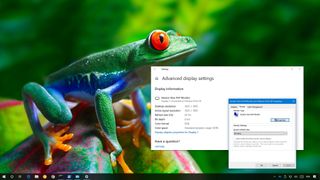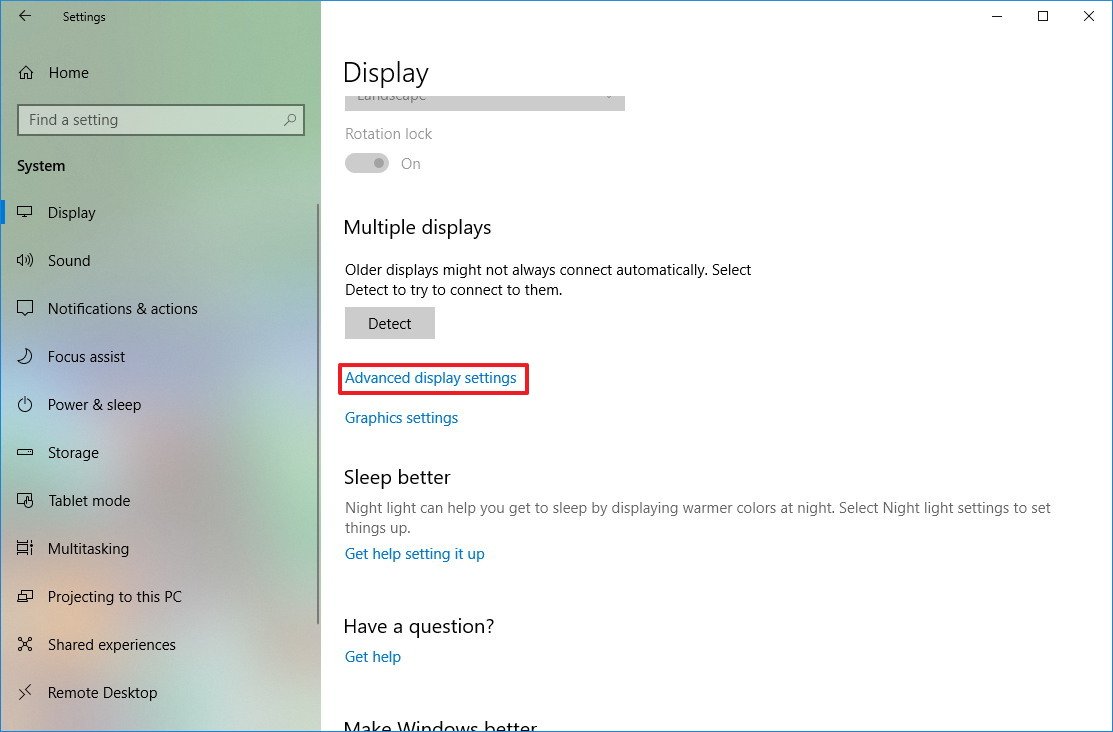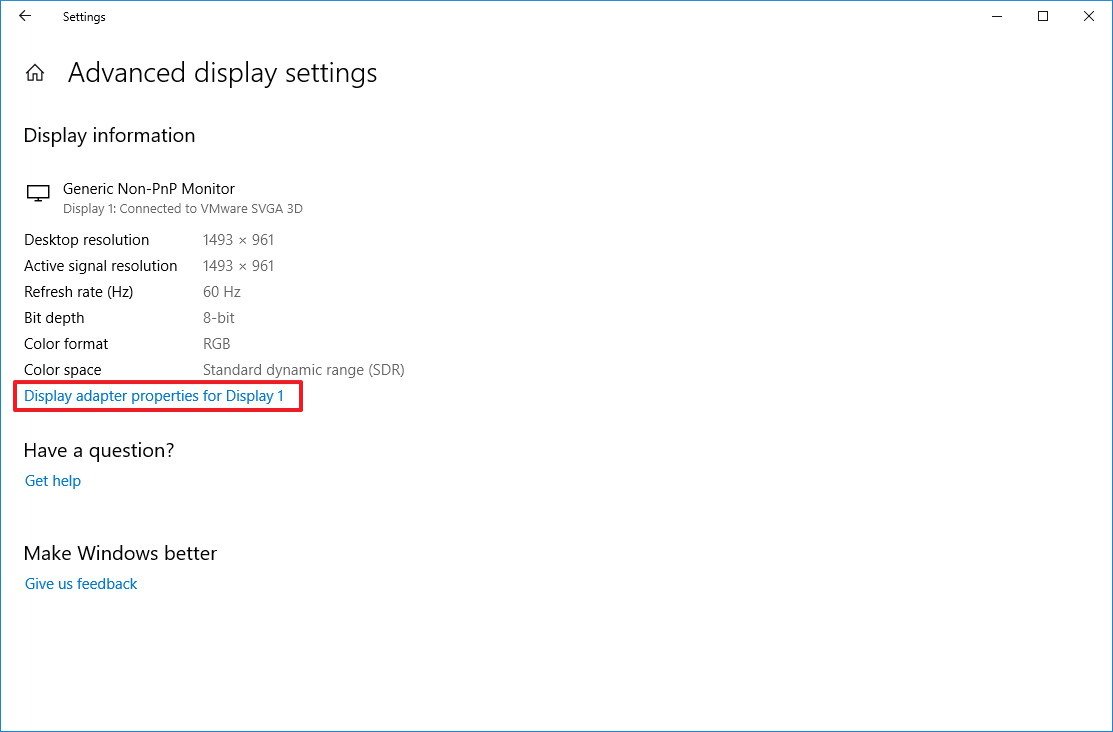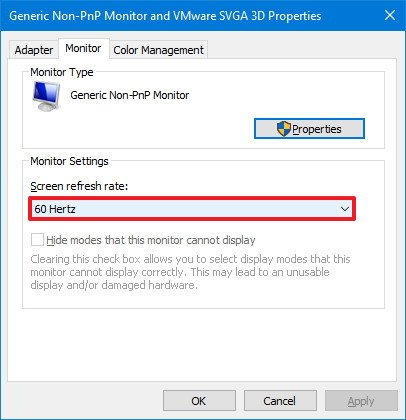How To Change The Primary Monitor In Windows 7

Refresh charge per unit refers to the number of times per second an image refreshes on the screen — in a process measured in Hertz (Hz). The higher the refresh rate, the better the experience, while lower refresh charge per unit commonly results on screen flickering, and it tin crusade heart strain and headaches.
Typically, a refresh rate of 60Hz is expert plenty for everyday computing tasks. You'll discover some jitters while moving the mouse on the screen, simply information technology's an optimal rate. If you drop below 60Hz, that's when yous'll start experiencing problems.
If you're a gamer, things are a bit unlike. Although 60Hz should provide a good experience, using a college screen refresh charge per unit of 144Hz or even 240Hz volition offering a much improve and smoother gaming experience.
Depending on the monitor, resolution, and graphics carte you're using, on Windows 10, it'due south possible to adjust the refresh rate manually for a sharper and smoother viewing experience.
In this Windows 10 guide, nosotros'll walk you through the steps to change the screen refresh rate on a monitor using the Settings app.
How to gear up a different screen refresh rate in Windows 10
If you're experiencing monitor issues because of the refresh rate configuration, use these steps to ready the near accurate rate:
- Open up Settings.
- Click on System.
- Click on Display.
- Click the Advanced display settings link.

- Click the Display adapter properties for Display 1 link.Quick Tip: Alongside resolution, scrap depth, and colour format, in this page, you can also see the refresh rate currently set on your monitor.

- Click the Monitor tab.
- Nether "Monitor Settings," use the driblet-downwardly menu to select the refresh rate you wish.

- Click the Utilise button.
- Click the OK button.
Once you've completed the steps, the monitor should commencement using the new refresh rate that you've practical.
The rates yous can select will always depend on the monitor, graphics adapter, and resolution your device is using.
If your brandish supports a higher refresh rate, but the selection is non bachelor, make sure to re-install the latest graphics commuter. Too, you tin can try setting a lower resolution as many times displays can support higher refresh rate simply on a lower resolution.
In the instance that you're changing the screen refresh rate from 59 to 60 Hertz, but the refresh rate reverts to 59 Hertz, this is an expected behavior, and no additional action is required.
The reason for this beliefs is that specific displays will only study 59.94 Hertz, and when this happens, Windows volition display two frequencies, including 59Hz and 60Hz for compatibility reasons. However, both 59 to 60 Hertz will set the refresh rate to 59.94 Hertz.
More Windows 10 resource
For more helpful articles, coverage, and answers to common questions about Windows 10, visit the following resource:
- Windows 10 on Windows Central – All you need to know
- Windows 10 help, tips, and tricks
- Windows 10 forums on Windows Cardinal
Mauro Huculak is technical author for WindowsCentral.com. His primary focus is to write comprehensive how-tos to help users get the most out of Windows 10 and its many related technologies. He has an It background with professional certifications from Microsoft, Cisco, and CompTIA, and he's a recognized member of the Microsoft MVP community.
Source: https://www.windowscentral.com/how-change-monitor-refresh-rate-windows-10
Posted by: walkeriiii1981.blogspot.com

0 Response to "How To Change The Primary Monitor In Windows 7"
Post a Comment